Abstract
Sliced, cured bacon, packed in cans and seeded with 6 × 105 spores per can of Clostridium botulinum strains 33A or 41B, or with 3 × 106 spores per can of strains 36A, 12885A, 9B, or 53B, was irradiated to various dose levels with γ radiation. Evidence provided by swelling, toxicity, and recoverable C. botulinum with 2,200 inoculated, irradiated cans demonstrated that: (i) 4.5 Mrad were more than adequate as a sterilization dose; (ii) the experimental minimal sterilizing dose was 2.0 Mrad, and the theoretical 12-log reduction dose was 2.65 or 2.87 Mrad depending on the method of calculation; (iii) some spoilage occurred at dose levels below 2.0 Mrad; (iv) all visible spoilage of irradiated bacon was due to strains 33A and 12885A only, whose D values were, respectively, 0.141 and 0.177 Mrad based on spoilage data, and 0.221 and 0.188 Mrad, respectively, when based on recovery data; (v) toxic cans did not always result in swelling, nor did swollen cans always produce toxic spoilage; and (vi) viable C. botulinum can exist for at least 8 months in storage at 30 C without producing visible or toxic spoilage at doses below 2.0 Mrad.
Full text
PDF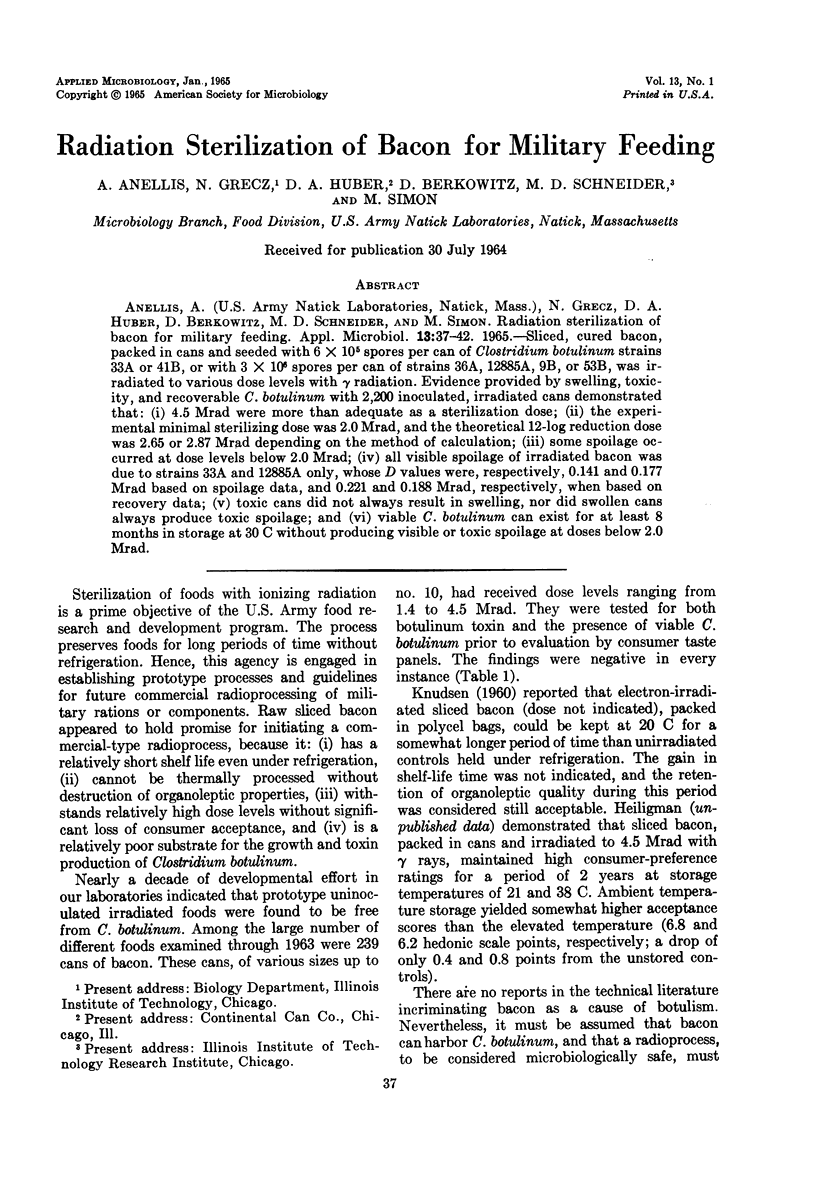
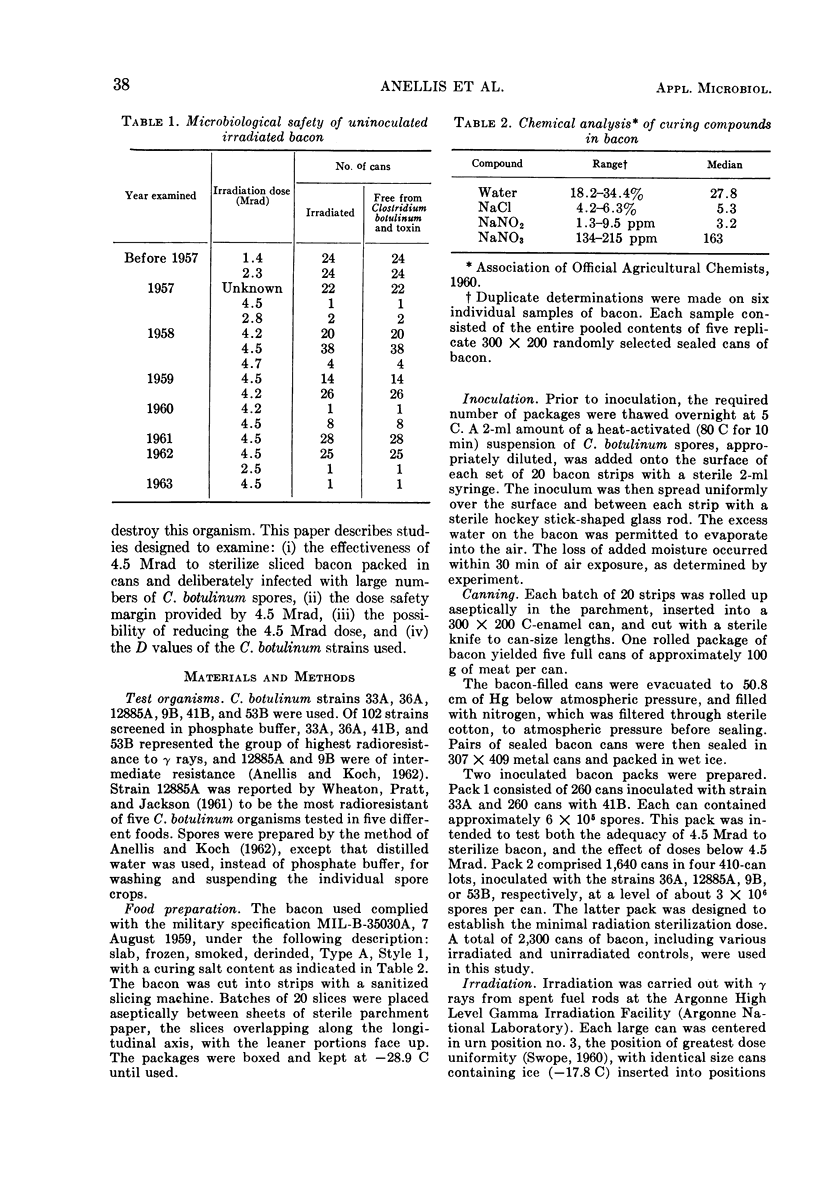
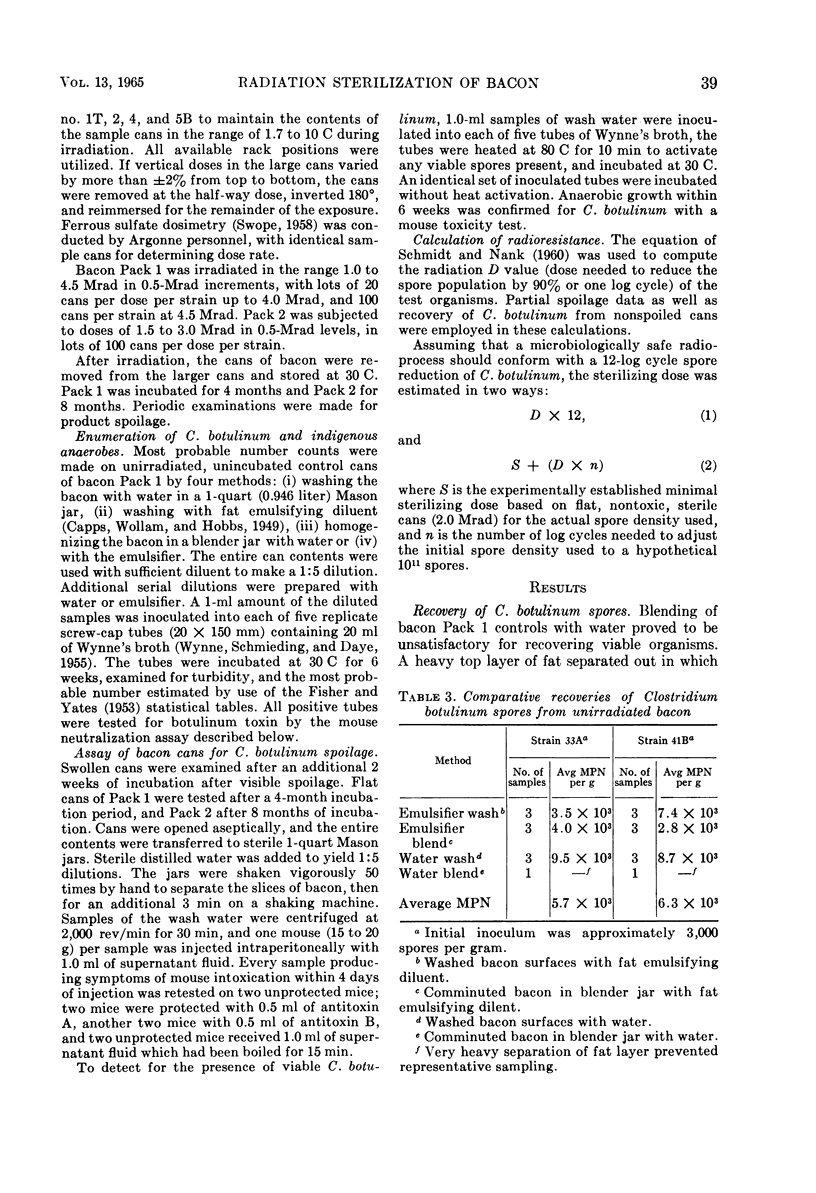
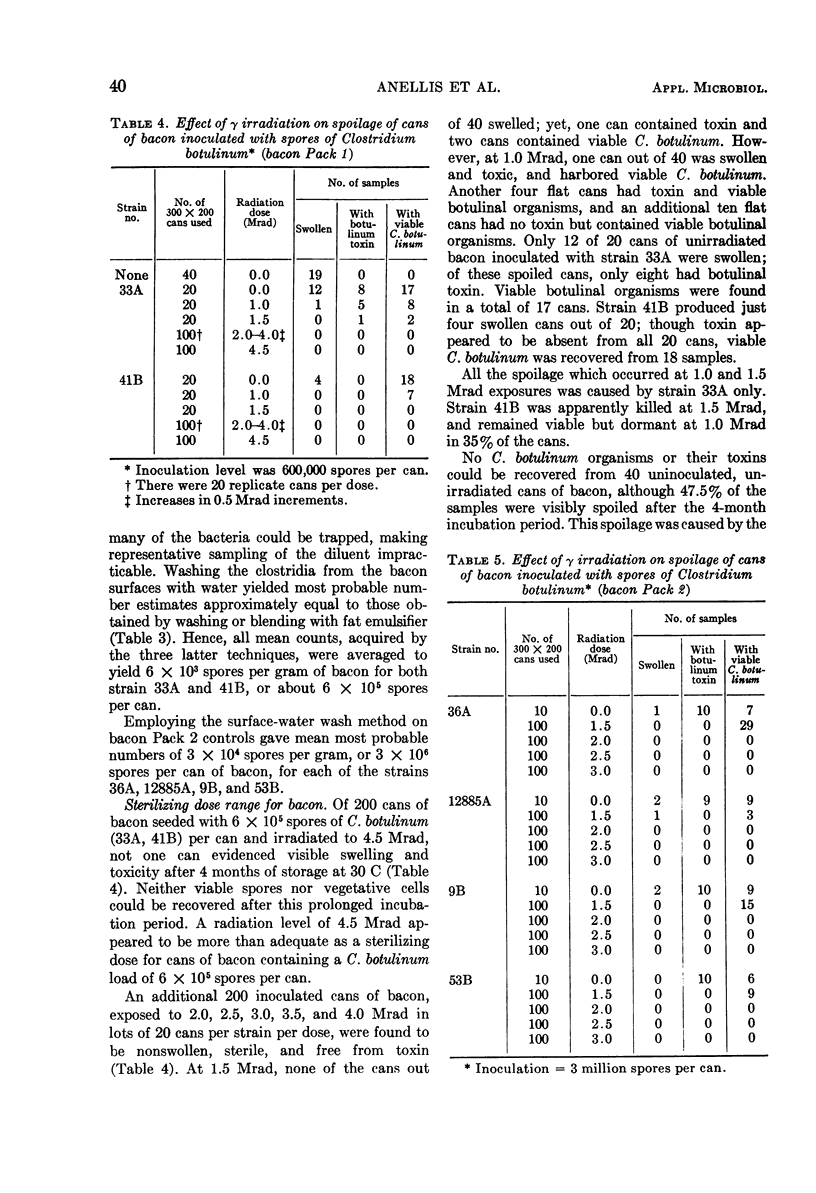
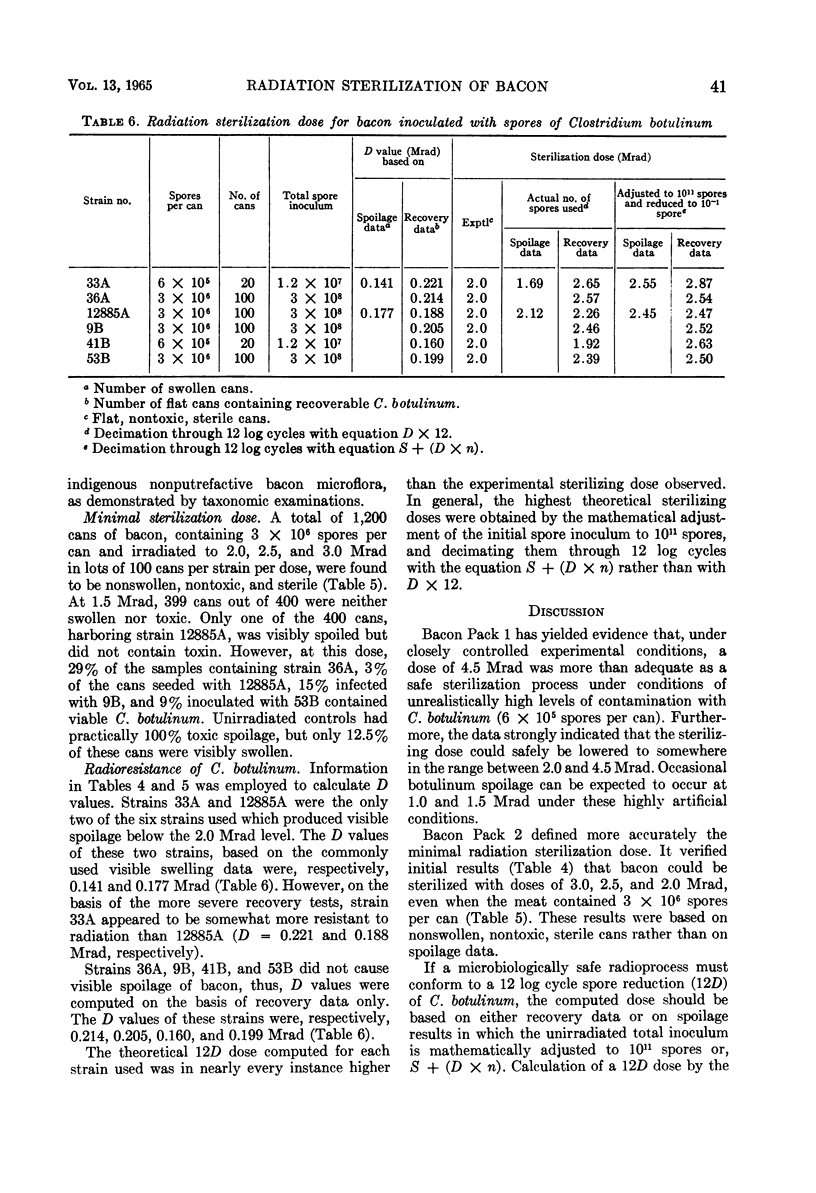
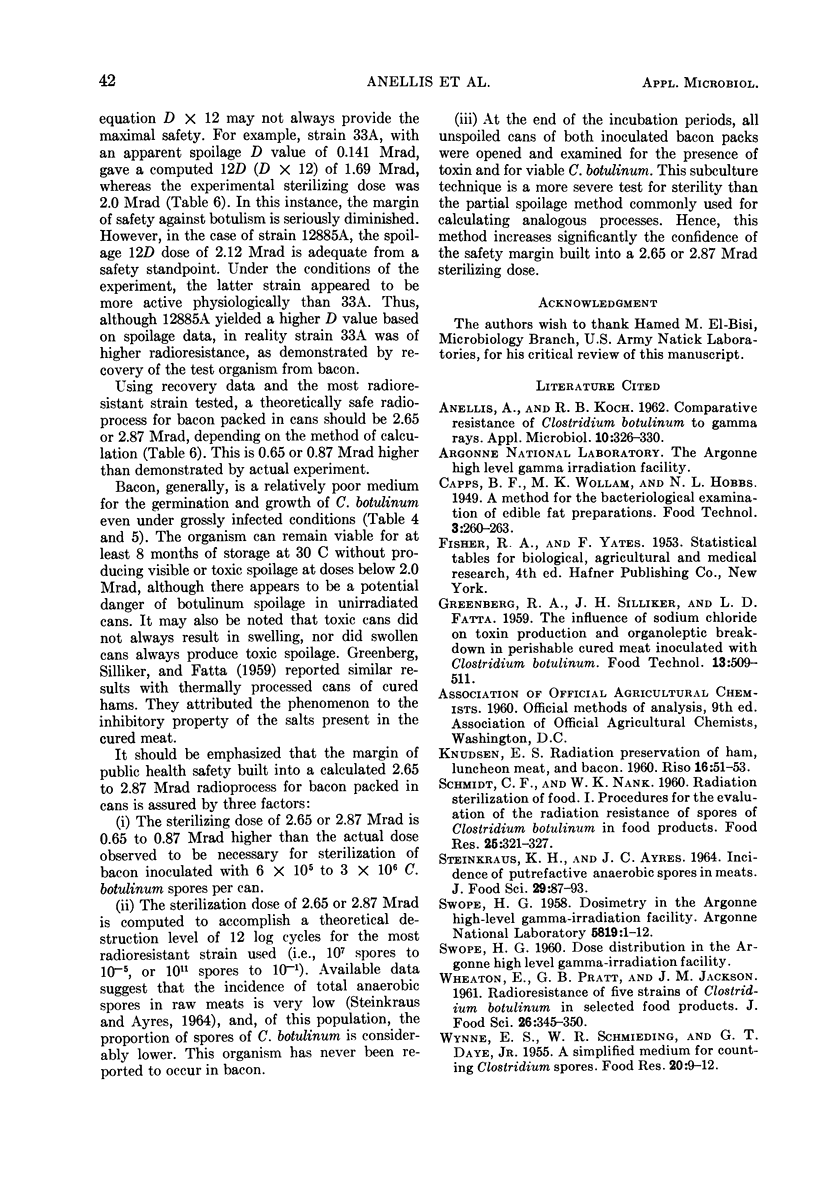
Selected References
These references are in PubMed. This may not be the complete list of references from this article.
- ANELLIS A., KOCH R. B. Comparative resistance of strains of Clostridium botulinum to gamma rays. Appl Microbiol. 1962 Jul;10:326–330. doi: 10.1128/am.10.4.326-330.1962. [DOI] [PMC free article] [PubMed] [Google Scholar]


